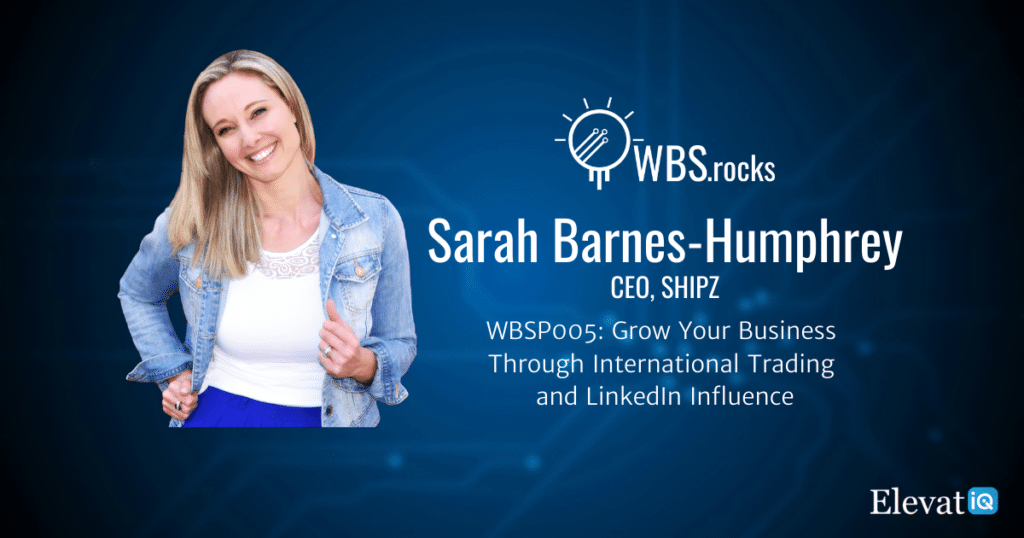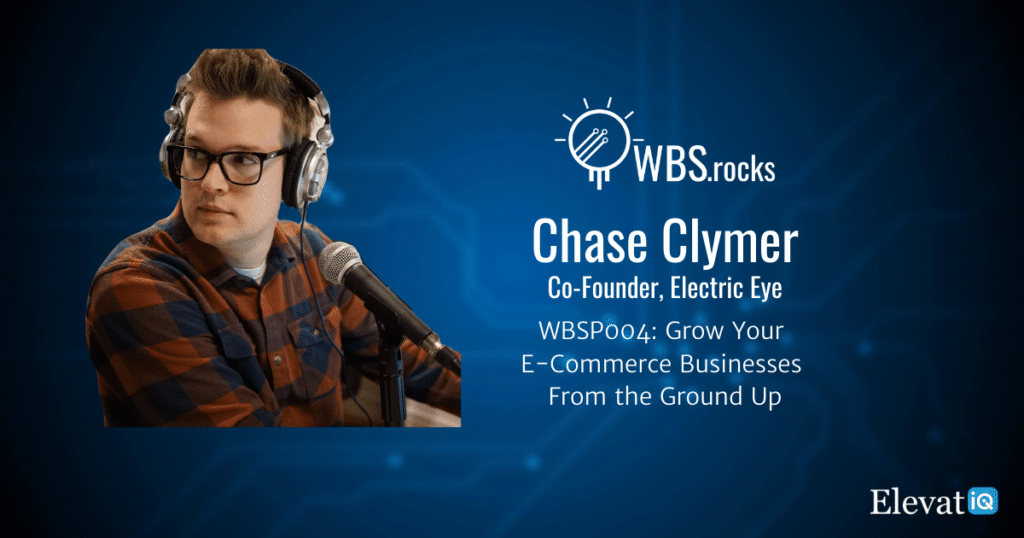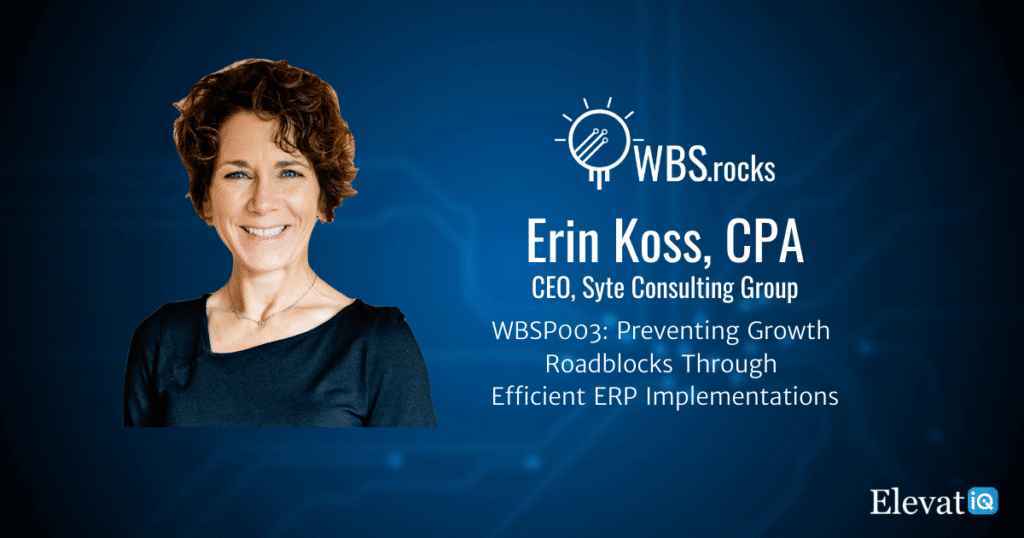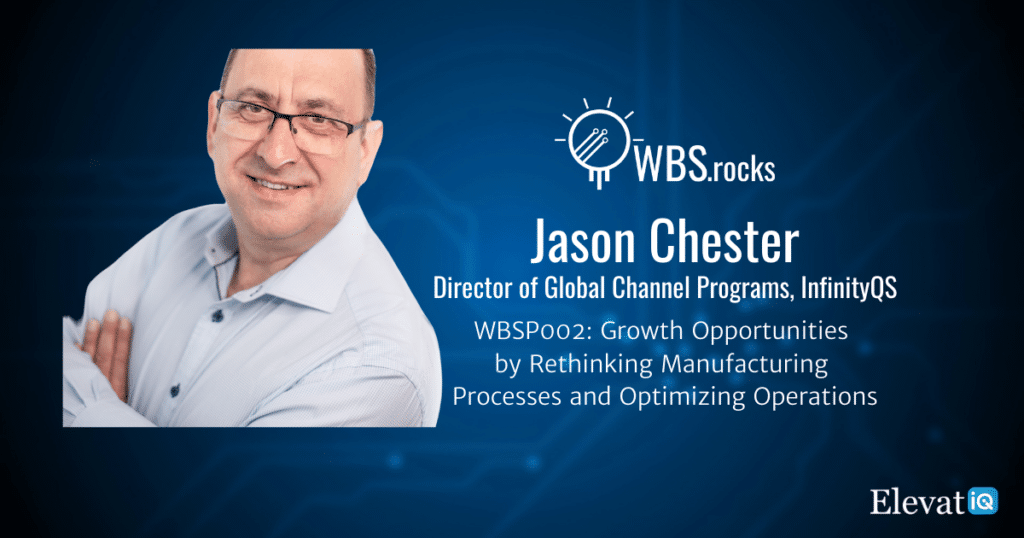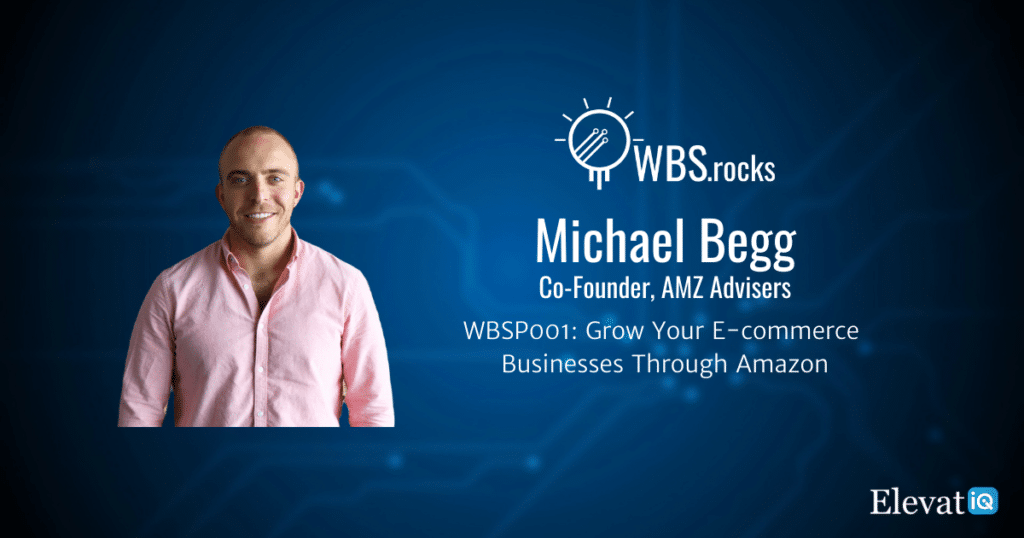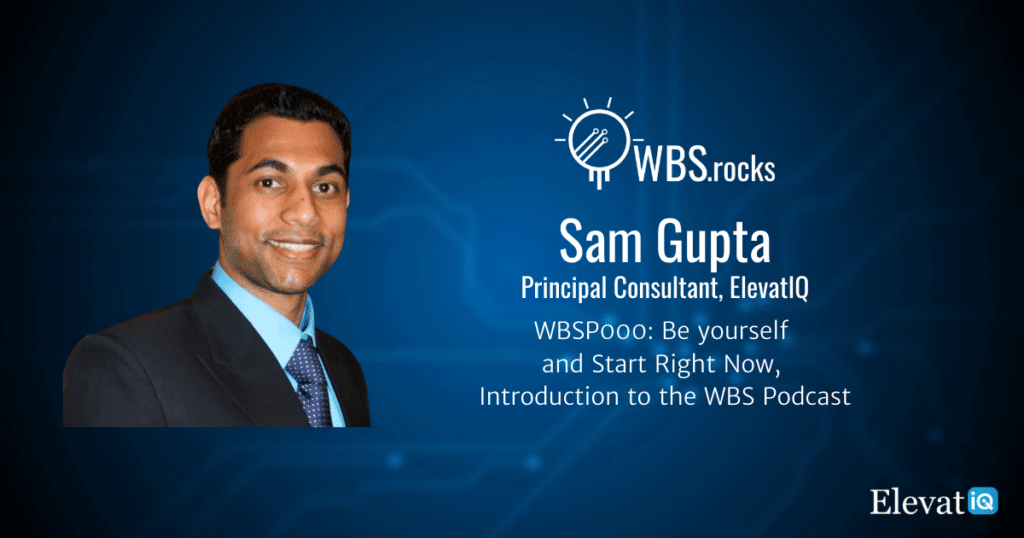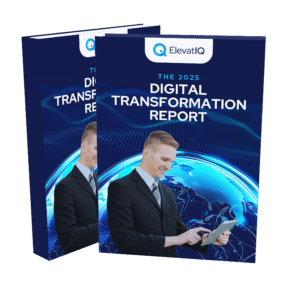WBSP005: Grow Your Business Through International Trading and LinkedIn Influence w/ Sarah Barnes-Humphrey
In this episode, we have our guest Sarah Barnes-Humphrey from Shipz, who shares her knowledge of the international supply chain and trading. She discusses the challenges associated with traders and manufacturers as they go through the process of international trading.
Since Sarah is highly influential on LinkedIn and in the international supply chain community with over 26,000 followers on her podcast and 11,000 personal followers, we also had a chance to briefly touch on her productivity secrets. And why LinkedIn is essential for personal branding and community development.
Chapter Markers
- [0:00] Intro
- [3:59] Personal journey and current focus
- [4:38] Her LinkedIn journey
- [7:51] Her productivity secrets
- [9:07] Recommendation for executives why LinkedIn matters
- [10:40] Impact of LinkedIn on Sarah’s personal and professional life
- [11:33] Overview and international supply chain benefits of Shipz
- [14:57] Where Shipz fits among other systems such as ERP or TMS
- [17:53] International supply chain roadmap for Shipz platform
- [19:50] How importers and exporters can save on their international supply chain activities
- [25:51] Collaboration with international supply chain custom brokers
- [26:41] Current practices and lesson learned on international shipments
- [28:40] INCO terms for importers and exporters
- [29:15] Closing thoughts
- [30:05] Outro
Key Takeaways
- You should put aside a certain amount of time on a daily basis to really cultivate, engage. And when engaging on LinkedIn, it’s really, really important to not only react to a post but to comment on a post and even share a post with some of your comments about what you’re posting and why you’re posting it.
- It’s very difficult from an importer and exporter standpoint, to really compare apples-to-apples, when you’re dealing with three to five freight providers on every single shipment to provide you know, rates and different things like that you’re getting three to five different quotations back with three to five different terms and conditions.
- If your shipper overseas is paying for the freight to your door, they are putting the freight charges onto your commercial invoice, if they’re not breaking out the taxes and the duties, you’re actually paying taxes, or sorry, if they’re not breaking out the freight portion of what you’re paying for freight on the product that you’re buying, you’re actually paying taxes and duties on that portion, which you don’t need to.

Subscribe and Review
Apple | Spotify | Stitcher | Google Podcasts | Deezer | Player FM | Castbox
About Sarah
Sarah Barnes-Humphrey is the co-founder and CEO of the innovative bid-and-ship freight platform Shipz Inc.
Born from a family of logistics entrepreneurs, Supply Chain was in Sarah’s blood from the get-go, and that natural flair has only grown over time. Over the course of her career, Sarah has held leadership roles in numerous disciplines across Supply Chain, from operations to sales and marketing, and it was the insights and expertise gained during this time, that helped Sarah identify a gap in the market and go on to found Shipz. With Shipz, Sarah is on a mission to change the face of international shipping.
Passionate about collaboration, transparency and diversity, Sarah also brings her infectious enthusiasm and dedication to better business to her popular podcast, Let’s Talk Supply Chain. Bringing awareness to brands and hot topics in the industry, Let’s Talk Supply Chain, and its sister shows Women in Supply Chain and Blended, deliver thought-provoking questions and lively discussion, weekly.
Sarah has been voted ‘Top 100 Most Influential Women Leaders in Supply Chain (global)’ and ‘Top 100 Most Influential Women in Canadian Supply Chain,’ and is a regular contributor in thought- leadership at key industry events.
Resources
- Connect with Sarah
- Connect with Shipz
- Lets Talk Supply Chain Podcast
Full Transcript
Sarah Barnes-Humphrey 0:00
We talked to a lot of people and the pain that their teams are going through. Like I’m talking to some international supply chain stakeholders right now, where their teams are begging their team leaders to find a better way for this process just because and that also is kudos to the next generation that’s coming up as well and is handling some of this stuff. And they are kind of like why are we doing it this way?
Intro 0:24
Growing a business requires a holistic approach that extends beyond sales and marketing. This approach needs alignment among people, processes, and technologies.
So if you’re a business owner, operations, or finance leader looking to learn growth strategies from your peers and competitors, you’re tuned into the right podcast. Welcome to the WBS podcast where scalable growth using business systems is our number one priority.
Now, here is your host, Sam Gupta.
Sam Gupta 1:01
Hey everyone. Welcome back to another episode of The WBS podcast. I’m Sam Gupta, your host, and principal consultant at the digital transformation consulting firm, ElevateIQ.
The international supply chain is entirely different from the domestic. Growing internationally requires you to understand various stakeholders and processes involved. The new collaborators could be importers, exporters, custom brokerage shops, freight providers, and regulatory agencies. The process is extremely complex and involved. This process also exposes you to new risks unfamiliar to you. The lack of understanding of the international supply chain process and risks could be a hit on your growth ambitions.
In today’s episode, we have our guest, Sarah Barnes-Humphrey from Shipz, who shares her knowledge of the international supply chain and trading. She discusses the challenges associated for traders and manufacturers as they go through the process of international trading.
Since Sarah is highly influential on LinkedIn and in the supply chain community with over 26,000 followers on her podcast and 11,000 personal followers, we also had a chance to briefly touch on her productivity secrets and why LinkedIn is essential for personal branding and community development.
Sam Gupta 2:29
Sarah Barnes-Humphrey is the co-founder and CEO of innovative bid and ship freight platform Shipz, Inc.
Born from a family of logistics entrepreneurs supply chain was in Sarah’s blood from the get-go and that natural flair has only grown over time. Over the course of our career, Sarah has had leadership roles in numerous disciplines across the supply chain from operations to sales and marketing, and it was the insights and expertise gained during this time that helped Sarah identify a gap in the market and go on to form Shipz. With Shipz, Sarah is on a mission to change the face of international shipping.
Passionate about collaboration, transparency, and diversity, Sarah also brings her infectious enthusiasm and dedication to better business to her popular podcast Let’s Talk Supply Chain. Bringing awareness to brands and hot topics in the industry, Let’s Talk Supply Chain and its sister shows Women in Supply Chain and Blended deliver thought-provoking questions and lively discussion weekly.
Sarah has been voted top 100 most influential woman leaders in supply chain globally and top 100 most influential women in Canadian supply chain and is a regular contributor in thought leadership and key industry events.
With that, let’s get to the conversation.
Hey, Sarah, welcome to the show.
Sarah Barnes-Humphrey 3:52
Hey, Sam, I am super excited to be here to talk about everything that we are going to talk about today.
Sam Gupta 3:59 – Sarah’s personal journey and current focus
And I’m so excited to have you as well, just because the kind of you know, following you have obviously you are very famous in the supply chain space. But my listeners may not be familiar with you. Would you like to talk a little bit about what do you guys do?
Sarah Barnes-Humphrey 4:13
Sure. Yeah, absolutely. So I have been in supply chain logistics for over 20 years. Currently, right now I am the founder and host of Let’s Talk Supply Chain, which is a podcast, a blog, we do live streams, all sorts of things.
And then I’m also the CEO of Shipz, which is a new online marketplace platform for international shipping.
Sam Gupta 4:38 – Her LinkedIn journey
Okay, amazing Sarah, obviously, you know, you have a large following on LinkedIn. And if I look at, you know, my operations or the finance guys from the manufacturing, they are typically complaining about the workload.
So I want to know your secrets. You know, what you do to make sure that you are personally engaging with every single follower that you have. And I would like to know the count of your followers as well.
So could you touch a little bit on that?
Sarah Barnes-Humphrey 5:04
Sure. Yeah, absolutely. I don’t know if I have a secret sauce. But on our Let’s Talk Supply Chain LinkedIn page, we have just over 26,000 followers, on my personal LinkedIn, I have just over 11,000 followers as well.
I feel like I interact with everybody. And I take time to do that because they take time to interact with me. And I think that it’s very important. It’s something that I live by on a day-to-day basis, I do schedule some time to go through, you know, LinkedIn, and some of the messages, it can get overwhelming at times.
Because not only do you have people responding to posts, either through comments or reactions, but you’ve also got people sending you messages through the messaging function as well. And so I do spend a lot of time on LinkedIn. But that’s also because I’m cultivating and bringing together the community.
And yeah, so I don’t think I have any secrets. But I do, I would say that you should put aside, you know, a certain amount of time on a daily basis to really cultivate, engage. And when I talk about engaging on LinkedIn, it’s really, really important to not only react to a post but to comment on a post and even share a post with some of your comments about what you’re posting and why you’re posting it.
Sam Gupta 6:29
So in the case of you Sarah, I mean, you are not only engaging on LinkedIn, I think you are responding to the direct messages as well. When I approached you, you probably didn’t know me, but you responded right away.
Let’s say if I talk to my CEOs, and I’m talking to a lot of them on a daily basis, obviously, they are very busy. So they cannot respond to everyone.
But in your case, I get a very different energy.
So how do you keep up with all of this?
Sarah Barnes-Humphrey 6:54
It’s not easy. But I definitely make a point. I mean, if somebody is going to take their time to message me, I definitely want to message something back.
And that’s just, you know, one of the values that I live by, and so I definitely make sure that I have time to do that.
Sam Gupta 7:10
So you said that you don’t have any secret sauce, but in my opinion, you do because personally engaging with 26,000 followers, and 11,000 your personal followers, and I don’t know if there is going to be an overlap between these two.
But that seems to be a secret sauce.
So you have to tell me, what is your productivity secret?
Sarah Barnes-Humphrey 7:29
Well, I do have a team of people. I mean, it’s not just me. So I do have a team of people at Let’s Talk Supply Chain, that is handling some of the social media, I have a virtual assistant, content creator, communications manager, all of that kind of stuff.
So they definitely helped me. And so most of the things that I’m engaging with are from my personal LinkedIn.
Sam Gupta 7:51 – Sarah’s productivity secrets
Okay. But I mean, do you have any advice for your fellow CEOs in terms of how they can have a similar presence on LinkedIn? In terms of time management?
Sarah Barnes-Humphrey 8:02
Yeah, I would, I would definitely just suggest to dedicate and be intentional about some time that you’re going to set aside during your day to spend on LinkedIn.
Once you’re on LinkedIn, I think that it’s really important to react to some of the posts that you want to react to, I think it’s important to comment. And a lot of the times when we comment, that’s where people really see who we are. And it gives them a chance to interact with us and you can start a conversation, you never know where that’s going to lead.
So I highly, highly recommend getting into some of those comments, really engaging with the community through different types of posts. And then I would also share, like, if you have if there’s anything that you’ve resonated with, or any posts that you’ve resonated with, I would definitely suggest that you share it, but when you share it, don’t just share it. I think you need to share it with some of your comments. Why are you re-sharing this? What did it mean to you? What resonated with you from that post, and maybe even a shout-out to the author?
Sam Gupta 9:07 – Recommendation for executives why LinkedIn matters
Okay, I could not agree more with that advice, Sarah. And in fact, I mean, when I look at the manufacturing audience, they might not even have a LinkedIn account. Some of them I mean, are obviously very active, but some of them may not even have a LinkedIn account.
So let’s say if somebody is simply starting on the LinkedIn journey, they don’t have as many connections at this point in time, and they want to get to 25,000 followers.
How can they do it?
Sarah Barnes-Humphrey 9:33
Honestly, it’s really just through interacting and spending some time on it, spending some time on LinkedIn connecting with those that you know, I think that it’s super important that if you do have a team that’s generating social media for your company, that you get involved with it, you can see comments from outsiders that are commenting on your posts, and you get a good sense of who’s out there in your community.
And so I would go to you or companies, social media, or your LinkedIn page, go through it, see if there are some connections on there that you want to connect with. Then I would also just start, you can follow some hashtags as well. And you can find some people that way you can search by job function.
So if you want to connect with some other CEOs that are maybe not in your industry, you can also use the search function to be able to do that. And you can look through the list once you’ve done that search, and you can connect with those people as well. It’s also very important when you do connect with those people that you include a message because a lot of people want to hear from you and want to hear why you’re connecting with them.
Sam Gupta 10:40 – Impact of LinkedIn on Sarah’s personal and professional life
Okay, so how long have you been doing LinkedIn? And what has been the impact of LinkedIn, on your business and on your personal life?
Sarah Barnes-Humphrey 10:48
So I’ve been on LinkedIn for quite a while. But I have to say that I really didn’t start using it probably until well, actually, no, I was using it religiously, I guess, probably back to 2012. But I really started using it from a media perspective.
So I was using it from a sales perspective from 2012 to about 2016. And then as of 2016, when we started the podcast, I really started using LinkedIn, for my own personal reach, and also to build up the brand’s reach as well. And we’ve probably accumulated that 25,000 – 26,000 followers over the last two years.
Sam Gupta 11:33 – Overview and international supply chain benefits of Shipz
Okay, amazing. So let’s shift the gears a bit. And basically, we want to cover your, your business as well. We want to see how our audience manufacturers and distributors can benefit from Shipz.
So can you talk a little bit more about, you know, Shipz? And how manufacturers and distributors can take advantage of that?
Sarah Barnes-Humphrey 11:50
Sure. Yeah, absolutely. I would love to. So my background is in logistics, I worked for a 3PL in operations, done all sorts of operations, and then in sales. And What that did was it gave me a good view as to what it meant to be a freight provider, and also what it meant to be an importer and exporter.
What I quickly realized was that there is a lot of disconnect between the two. And there still is today. So what we did was we took what the importers and the exporters are doing when they’re trying to find rates for their air and their ocean freight shipments. And we took what the providers are doing, and we brought it online into a digital marketplace.
So importers and exporters usually go to three to five different providers to get rate quotes. They also go to them when they need benchmarking rates.
Sarah Barnes-Humphrey 12:41
Well, Shipz.com now offers you an option to get benchmarking rates at your fingertips, so you no longer have to exhaust your freight providers. And then once the shipment is close to being ready, you can then go to a variety of different freight providers to provide you with real-time rates so that you can take a look at what’s out in the market.
Take a look at what the pricing is like. And then you can also book it through our platform as well. And a lot of importers and exporters, complain about having multiple different logins when they’re dealing with multiple different freight providers, Shipz provides one login, we also provide one vendor account.
So if you want to try out a new freight provider, you no longer have to go through the rigmarole of setting them up as a vendor in your system, you can set up one vendor account with ships, and that will take care of all of the different freight for freight providers that you want to try out and use.
Sam Gupta 13:38
So does that mean let’s say if I’m a manufacturer, and I’m actually shipping my electronic goods, and I’m importing some of the parts from China, can I simply use your portal and get connected with every single shipper out there?
Sarah Barnes-Humphrey 13:53
Absolutely. So you can log in to our system, put in all of your shipment details. And then you can either get your costing information with the click of a button. Or you can go out to a variety of different freight providers that will provide you with real-time rates on your shipment at that moment.
Sam Gupta 14:11
So what I’m hearing here is let’s say if I want to ship my goods, and I want to know the competitive rate, and I want to compare the different rates of different shippers, I can go to your platform and I can compare those rates and select the one that makes sense for me, right?
Sarah Barnes-Humphrey 14:23
Yes, absolutely. That’s exactly how it works.
Sam Gupta 14:27
Okay, do you guys do last-mile delivery as well? Or is that not part of your platform.
Sarah Barnes-Humphrey 14:32
So we don’t do last-mile delivery as a separate function. So when you come onto the platform, you can put in all of your air freight and your ocean freight shipment information. And if you’d like it to be delivered to the door, then you can utilize the INCO term for door delivery and those freight providers will quote you from door to door or port to door. Whatever you need. They can provide the rates for that.
Sam Gupta 14:57 – Where Shipz fits among other systems such as ERP or TMS
Okay, and in the ERP space, obviously, there are several different players. And I don’t know if you’re familiar with them, there are some of the players named, let’s say ProcessWeaver they are integrated with a lot of different ERP systems.
And what they do is they provide the carrier integration. I don’t know if they do air and ocean as well, but they have, let’s say, FedEx, the UPS of the world, you know, and all the trucking companies that a manufacturer or distributor need from the rate perspective, that is one.
And then we have a company called Pacejet. They also provide a similar sort of functionality, each of them is present in the specific ERP ecosystems.
So are you guys planning to be in any specific ecosystem from the ERP perspective?
Sarah Barnes-Humphrey 15:41
We are definitely working on integration at this very moment because we realized that it’s important for our customers to be able to be integrated with our system, as well as the freight providers as well.
So we want it to be a seamless, seamless operation for you, but we are agnostic. So we will be integrating with our customers’ TMS systems, their transportation management systems, or ERP systems, however, they have it set up and it will all flow through the Shipz platform.
Sam Gupta 16:12
Okay, so when we look at the landscape of TMS systems, sometimes it could be all over the place.
For example, let’s say if you look at you know, ProcessWeaver, they like to call themselves a TMS. But my understanding of the TMS system is more from transportation management where you could have a lot more functionality in terms of managing your logistics processes.
Obviously, the the the rate shopping is part of that too. So from your perspective, since you guys don’t plan to cover the trucking part, which is going to be essential, in my opinion for the manufacturers, and distributors when they are doing the rate shopping, because when they are doing great shopping, they are going from point A to point B.
Now Point A to Point B could be based on air, it could be based on you know, road, it could be based on the ocean, what they are looking for is the most competitive rate that they need to shop based on the platform.
So for you, would it make more sense to integrate with some of these players, for example, ProcessWeaver? Or would you directly integrate with an ERP system and work with manufacturers directly?
Sarah Barnes-Humphrey 17:14
So that’s a very loaded question. And it’s not that we’re not going to get into trucking. But we’ll definitely get into trucking later on.
What we do want to focus on is air and ocean freight. And one of the reasons for that is because it’s more complex. There’s not a lot of players, there are a lot of options when it comes to trucking when it comes to the last mile.
And so what we want to do with the platform is that we want to integrate with companies like that, to be able to provide that last mile to be able to provide the trucking and so we can have a full ecosystem for our customers. So we will be integrating on both sides. We’ll be doing an API with companies like them.
Sam Gupta 17:53 – International supply chain roadmap for Shipz platform
Okay, amazing. With respect to the trucking roadmap, I don’t know when that is going to be there.
Do you have any sort of roadmap with respect to ERP integration? which particular ERP system are you going to be planning first? Or maybe a TMS system? Do you have any of that roadmap right now?
Sarah Barnes-Humphrey 18:09
Yeah, so we’re focused more on the provider side at this very moment. So most of them are a lot of them are with Cargowise. And so we would be looking at the integration there.
And then we’ll be looking at the solution of more API integration with the importers and the exporters. Although we’re we are already in talks with some of our importers and exporters to already be doing that.
So it’ll most likely happen simultaneously.
Sam Gupta 18:38
Okay, and for the benefit of listeners who are not familiar with terms like providers and supply chain, could you help understand, you know what that means?
Sarah Barnes-Humphrey 18:47
Sure, yeah. So a freight provider can be a freight forwarding company who is a company that you would work with for your less than container truckload, your full container load, your air freight shipments, it could also mean airlines directly.
And it can also mean steamship lines or ocean carriers directly as well.
Sam Gupta 19:07
Okay, amazing. Are there any specific carrier that you are working at this point in time?
Sarah Barnes-Humphrey 19:12
No, we are. We are definitely agnostic in the industry. So one of the things that we wanted to do with this platform was to make sure that we were agnostic.
And so we invite different freight providers onto the platform, as well as you know, different importers and exporters as well so that the importers and the exporters can get a variety of different freight providers who are doing some very different things, some amazing things in the industry, and you wouldn’t necessarily have access to them otherwise.
And so we want to bring just everybody together onto the platform to be able to do better business when it comes to air freight ocean freight shipments.
Sam Gupta 19:50 – How importers and exporters can save on their international supply chain activities
You know, one of the things that I had noted during our first conversation about reducing the cost of the shipments. I think that’s one of the value propositions you had when I started talking about this specific topic with you.
So tell us a little bit more about how manufacturers can save money with their freight shipping at this point in time. And what are some challenges in the industry?
Sarah Barnes-Humphrey 20:14
Yeah, so there are so many different ways. And that’s such a great question, Sam.
So a lot of the challenges when it comes to importers and exporters when they are either pricing their air and ocean freight shipments, or booking their air and ocean freight shipments, is something that I mentioned earlier with the multiple logins. So there are multiple logins, you forget your password, so you’re spending a lot of time there. And then also, if you want to use a new freight provider, you have to set them up as a new vendor.
And so there’s a lot of time spent on that as well. There’s also a lot of time spent on email and Excel. And what happens there is that you’re going back and forth by email with your freight provider for costing, you’re going back and forth with them, once the shipment is ready to provide actually real-time pricing, you’re going back and forth with them when there’s when it’s booked. And there’s multiple different contacts for multiple different pieces of that shipment.
Sarah Barnes-Humphrey 21:13
Right. So you’ve got the pricing department when it comes to costing when it comes to taking a look at the real-time pricing, then you’ve got your operations team that takes over. And so you’ve got another person another email, and they might have colleagues and documentation is going back and forth by email and it’s getting lost and people are putting it into folders and not remembering where they are or maybe putting them into the wrong folders.
So there is just so much time because think about that they’re going to three to five different providers with every single one of those things. And so it’s just a massive amount of emails and contacts and missing documents and all that kind of stuff. We want to fix that because it really shouldn’t be that difficult. And it really shouldn’t be that time-consuming.
So just from that side of things, we are saving importers and exporters so much time, because what we do is we keep all of the interaction with the freight provider on our platform, you can keep the documents on our platform in that particular PO.
So if you give your username and password to somebody else on your team, they can go in and see exactly what’s been happening with that shipment. And they don’t have to go into your email or ask you to resend you an email. So just from that respect alone, I mean, we are saving companies two to three hours a day.
Sam Gupta 22:40
That’s amazing. I could not agree more with this whole, you know, collaboration and communication aspect, from the delivery perspective, because I was looking at one of the companies that did the last-mile delivery, and they would like, you know, $40 million. And they did the last mile delivery.
And I guess they had 4000 orders per month and the amount of churn that they had in their operations department. It was a nightmare, to be honest, we see a lot of complexity in the ERP space is with manufacturers and retailers as well. But this was different. So I can definitely relate to the complexity that you just mentioned.
Sarah Barnes-Humphrey 23:20
Yeah. And it’s crazy that, you know, we did a lot of research before we decided to launch Shipz, the way that we the platform, the way that we have built it.
And we talked to a lot of people and the pain that their teams are going through like I’m talking to some importers and exporters right now. where their teams are begging their team leaders to find a better way for this process just because and that also is kudos to the next generation that’s coming up as well and is handling some of this stuff and they are kind of like why are we doing it this way?
Sam Gupta 23:57
There are so many different elements from the costing perspective as well. And I don’t know what all you guys are planning to cover there is a customs brokerage, I think that custom isn’t going to be more in a lot of different international shipments, the companies that are collaborating with the neighboring countries, for example, here in US and Canada, there needs to be a NAFTA documentation. I don’t know if you guys get into all of that, but it could be fairly complex.
Sarah Barnes-Humphrey 24:22
Yeah, yeah. So when you do ask for a quotation, you can ask the freight providers to quote customs or insurance. Usually, most importers do have their own customs broker. So that doesn’t come up as much.
So I think, you know, there are options there as well for them to be able to get that quoted, but you’re right. I mean, air and ocean freight, you know, shipping internationally is quite complex.
Sam Gupta 24:50
Right. So, let’s say if I’m working with you, I’m a manufacturer and you are helping me with my freight quote.
So do I need to worry about the need Some brokers separately is it going to be embedded as part of the price that you are going to offer me on your platform?
Sarah Barnes-Humphrey 25:07
It’s really up to you. If you have your own customs broker, you can use your own customs broker, you can let the freight provider know through our platform who your customs broker is. Or if you’d like them to take care of customs, you can actually just by clicking a button, let them know that you would like them to include customs in their quote, and they can provide you with that part of the pricing.
And then also, they can provide you with that service as well. The one thing that you mentioned was the documentation. So we have an area where you can upload documentation as an importer and exporter. And the freight provider can upload documentation as well.
So again, it stays within that PO, and you’re not having to search for it everywhere. And you can just exchange documents through our platform.
Sam Gupta 25:51 – Collaboration with international supply chain custom brokers
Okay, wonderful. And one of the things that you mentioned during this conversation is, you know, let’s say if I want to invite my own customs broker, and he or she is not part of the platform, what would be the workflow in your system to invite them and interact with them?
Sarah Barnes-Humphrey 26:08
Yeah, so you would just send a message to the freight provider that you have chosen to let them know who your customs broker is with the contact details, and then the freight forwarder will contact them once the shipment is at that point. And so it’s, it’s very, very easy.
What we are working on as well as expanding the profile for the importer and the exporter so that they can keep information within their profile and be able to share that with the freight provider as well. So if they wanted to keep their customs broker information there, and just, you know, do a quick transfer over to the freight provider, we’re working on upgrading some of those features as we move along as well.
Sam Gupta 26:47 – Current practices and lesson learned on international shipments
Okay, amazing. Do you have any perspective in terms of the sort of mistakes that manufacturers or distributors might be doing at this point of time, in choosing their their freight provider, or maybe making that more expensive than it needs to be?
Sarah Barnes-Humphrey 27:02
Yeah, I think it’s very difficult from an importer and exporter standpoint, to really compare apples-to-apples, when you’re dealing with three to five freight providers on every single shipment to provide you know, rates and different things like that you’re getting three to five different quotations back with three to five different terms and conditions.
And you know, there could be some ancillary charges on there, there could be some charges that are put in the fine print that you might not have noticed or didn’t even realize. And so the shipment ends up being costing you more than it really should have.
The other thing to take note of is if you’re relying on your, on your shipper overseas to pay for the freight, this is a big one. So if your shipper overseas is paying for the freight to your door, they are putting the freight charges onto your commercial invoice, if they’re not breaking out the taxes and the duties, you’re actually paying taxes or sorry, if they’re not breaking out the freight portion of what you’re paying for freight on the product that you’re buying, you’re actually paying taxes and duties on that portion, which you don’t need to.
And so that’s a really simple hack, that if you do leave it up to somebody else to move your freight and to charge you for that freight, you want to make sure that the freight charges are being broken out so that you’re not spending too much money or too much additional money on taxes and duties when you really don’t need to.
Sam Gupta 28:40 – INCO terms for importers and exporters
Oh, my goodness, I mean, my head spins when I look at all of those INCO terms who is responsible for the delivery? Who owns the good? Oh my goodness, it’s so complex.
Sarah Barnes-Humphrey 28:51
It really, really is. Yeah, we actually have a chart for INCO terms on our platform, because we want to help people understand a little bit more about the INCO terms what they mean because it really makes a difference to your business because it talks about where the risk is being transferred.
So not only where the payment is being transferred, but also the risk of the shipment is being transferred as well.
Sam Gupta 29:15
Okay, amazing. So that’s that’s it for today. Do you have any last-minute thoughts by any chance for our audience?
Sarah Barnes-Humphrey 29:21
No, I just I would just encourage everybody to go to Shipz.com. Check us out. If you’re looking for a demo, reach out to me at Sarah@shipz.com.
And Sam, I just wanted to let you know like I’m really excited about your podcast. I think you guys are doing some amazing things. And I really just enjoyed being on your show.
Sam Gupta 29:46
Thank you so much for your time Sarah and just to touch on your contact information that is going to be part of our show notes.
And we are going to be including some reference material as well. So if anybody wants to learn about either Shipz or Sarah We are going to have all of that on our page.
Sarah Barnes-Humphrey 30:03
Great. Thank you, Sam.
Sam Gupta 30:05
I cannot thank our guests enough for coming on to the show for sharing their knowledge and journey. I always pick up stuff from our guests, and hopefully, you learned something new today.
If you want to learn more about Sarah, please visit letstalksupplychain.com. Importers and exporters can also sign up at shipz.com. Links and more information will also be available in the show notes. If anything in this podcast resonated with you and your business, you might want to check other related episodes, including the interview with Chase Clymer from ElectricEye, who brings a unique perspective on growth from the angle of ecommerce toolset and Shopify. Also, the interview with Jason Chester from InfinityQS, who touches on growth from a real-time manufacturing quality intelligence standpoint.
Also, don’t forget to subscribe and spread the word among folks with similar backgrounds. If you have any questions or comments about the show, please review and rate us on your favorite podcasting platform or DM me on any social channels. I’ll try my best to respond personally and make sure you get help. Thank you and I hope to catch you on the next episode of the WBS podcast.
Outro 31:31
Thank you for listening to another episode of The WBS podcast. Be sure to subscribe on your favorite podcasting platform so you never miss an episode. For more information on growth strategies for SMBs using ERP and digital transformation, check out our community at wbs.rocks. We’ll see you next time.

